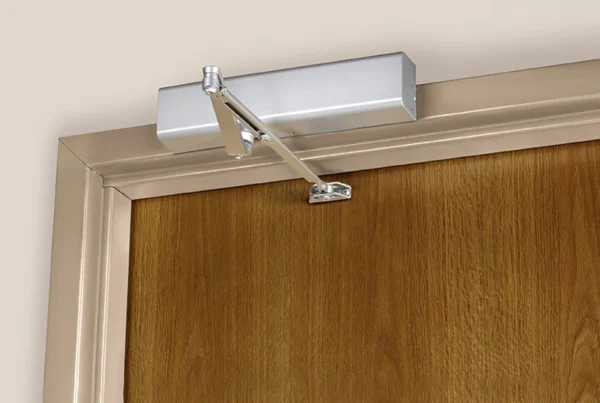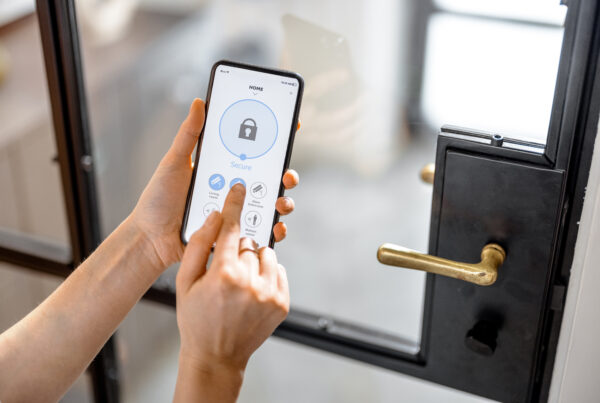A master rekey system is a sophisticated approach to access control, enabling different levels of access to various parts of a company. This hierarchical structure simplifies key distribution, making it easier to manage who has access to specific areas.

By implementing such a system, businesses can enhance their security and reduce the complexity associated with traditional key management systems. This not only improves operational efficiency but also provides a more secure environment.
Key Takeaways
- A master rekey system simplifies access control by providing a hierarchical structure.
- It enhances security by limiting access to authorized personnel.
- Businesses can reduce the complexity of key management.
- Operational efficiency is improved through streamlined access control.
- A more secure environment is achieved through reduced key duplication risks.
What is a Master Rekey System?
Master rekey systems are engineered to provide multiple levels of access within an organization, making it a versatile solution for managing keys and access control.
Understanding the Basics
A master key system is designed to simplify key management by including various levels of key access. This typically involves a hierarchy that includes master keys, sub-master keys, and user keys, each with its own level of access.
The master key system operates on a principle where each lock is keyed differently but can be accessed by a master key, allowing for efficient management of access rights.
Key Terms You Should Know
To understand how a master rekey system works, it’s essential to familiarize yourself with key terms associated with it.
- Master Key: A key that can open multiple locks within a system.
- Sub-Master Key: A key that operates a subset of locks within the system.
- User Key: A key that is designed to open a single lock or a limited number of locks.
- Rekeying: The process of changing the lock’s configuration so that it works with a new key.
Understanding these terms is crucial for implementing and managing a master rekey system effectively.
Benefits of Implementing a Master Rekey System
A master rekey system offers a multitude of benefits for businesses looking to enhance their security and access control. By implementing such a system, businesses can enjoy a more streamlined and secure environment.
Increased Security
One of the primary benefits of a master rekey system is the increased security it provides. With a master rekey system, businesses can control who has access to specific areas, reducing the risk of unauthorized access.
- Limit access to sensitive areas
- Enhance overall security posture
- Reduce the risk of theft or vandalism
Simplified Access Control
A master rekey system simplifies access control by allowing businesses to manage keys and access levels efficiently. This means that businesses can easily grant or revoke access as needed.
- Assign access levels to different keys
- Manage who has access to specific areas
- Easily update access levels as needed
Cost-Effective Solution
Implementing a master rekey system is also a cost-effective solution for businesses. By reducing the need for frequent lock changes and minimizing the number of keys in circulation, businesses can save money.
- Reduce the cost of lock changes
- Minimize key duplication costs
- Lower the overall cost of access control

In conclusion, a master rekey system provides numerous benefits, including increased security, simplified access control, and cost savings, making it an attractive solution for businesses looking to enhance their access management.
How a Master Rekey System Works
Understanding how a master rekey system works is crucial for effective access management. A master rekey system is designed to provide a hierarchical structure for key distribution, ensuring that different individuals have access to specific areas based on their clearance level.
The Rekeying Process
The rekeying process involves adjusting the internal mechanisms of locks to work with new keys, rendering old keys useless. This process is essential for maintaining security, especially when there’s a change in personnel or when keys are lost or stolen.
During rekeying, a locksmith or security expert modifies the lock’s cylinder to accept a new key. This is done by changing the pins inside the lock to match the new key’s configuration. The process requires precision to ensure that the lock works smoothly with the new key while remaining incompatible with the old key.
Types of Keys Used
A master rekey system utilizes various types of keys, each serving a distinct purpose:
- Master Key: Grants access to all locks within the system.
- Sub-master Key: Offers access to a subset of locks, useful for departmental or group access.
- User Key: Limited to accessing specific locks, typically assigned to individuals.
These keys are designed to work within a hierarchical structure, allowing for flexible access control. The use of different keys ensures that individuals have access only to the areas necessary for their roles, enhancing overall security.
Ideal Applications for Master Rekey Systems
Master Rekey Systems are designed to cater to a wide range of applications, enhancing security and convenience. These systems are versatile and can be applied in various settings, including residential, commercial, and institutional environments.

Residential Use
In residential settings, Master Rekey Systems offer homeowners a simplified way to manage access to their properties. Whether it’s for rental properties or large family homes, these systems ensure that different individuals have access to the appropriate areas without the need for multiple keys.
Commercial Use
For commercial properties, Master Rekey Systems provide an efficient solution for managing employee access, securing sensitive areas, and controlling entry points. This is particularly beneficial for businesses with multiple locations or large facilities.
Institutional Settings
Institutional environments, such as schools and government buildings, benefit significantly from Master Rekey Systems. These systems help in organizing access for students, staff, and visitors, enhancing overall security and reducing administrative burdens.
By implementing a Master Rekey System, organizations and individuals can enjoy enhanced security, simplified access control, and cost savings. The flexibility and scalability of these systems make them an ideal choice for a variety of applications.
Choosing the Right Master Rekey System
Selecting the ideal master rekey system is a crucial decision for businesses aiming to enhance their security infrastructure. A well-chosen master rekey system can significantly simplify access management while bolstering security.
Factors to Consider
When choosing a master rekey system, several factors come into play. Businesses should consider their specific security needs, the scalability of the system, and its compatibility with existing locks. The system’s ability to integrate with other security measures, such as surveillance systems, is also an important consideration.
In the context of business locksmithing, the expertise of the locksmith is crucial. A professional locksmith can provide valuable insights into the most suitable master rekey system for a particular business, taking into account the unique security challenges it faces.
- Assess the current lock infrastructure to determine compatibility.
- Consider the level of security required, including the need for high-security locks.
- Evaluate the scalability of the system to accommodate future growth.
Brands and Products to Look For
Several reputable brands offer high-quality master rekey systems. When selecting a brand, it’s essential to consider their reputation, the quality of their products, and the level of customer support they provide. Some well-regarded brands in the industry include Schlage, Medeco, and Kwikset, known for their robust security features and compatibility with a wide range of lock types.
When evaluating products, look for those that offer advanced security features, such as anti-pick pins and reinforced strike plates. It’s also beneficial to choose products with a user-friendly interface and straightforward installation process.
- Research brands known for their quality and reliability.
- Read reviews and testimonials from other customers.
- Consult with a professional locksmith for recommendations.
Common Misconceptions About Master Rekeying
Many people have misconceptions about master rekeying that can be easily debunked. Master rekeying is a complex process that involves reconfiguring a lock system to work with a new key, while still allowing existing keys to function. Despite its benefits, there are several misconceptions surrounding this process.

Debunking Myths
One common myth is that master rekeying compromises the security of a lock system. However, when done correctly, master rekeying can actually enhance security by limiting access to authorized personnel. Another misconception is that the process is too complicated or time-consuming. In reality, a professional locksmith can efficiently rekey a lock system with minimal disruption.
Some people also believe that master rekeying is only necessary for large organizations. However, even small businesses and residential properties can benefit from a master rekey system, especially when there are multiple locks involved or when there’s a need to control access.
Clarifying the Process
The master rekeying process involves several steps, including assessing the existing lock system, determining the master key configuration, and rekeying the locks. A locksmith will typically work with the property owner to understand their specific needs and create a customized master key system.
It’s also important to understand that master rekeying is not the same as replacing the entire lock system. In most cases, the existing locks can be rekeyed, saving time and money. By clarifying the process and debunking common myths, businesses and individuals can make informed decisions about implementing a master rekey system.
A well-implemented master rekey system provides a high level of control and security, making it an attractive solution for various settings. By understanding the facts about master rekeying, you can ensure that your property is secure and that access is controlled effectively.
Installation of a Master Rekey System
Whether you opt for DIY or professional installation, setting up a Master Rekey System involves several important steps. A well-installed Master Rekey System is crucial for enhancing your security infrastructure and simplifying access management.
DIY vs. Professional Installation
When it comes to installing a Master Rekey System, you have two primary options: DIY installation or hiring a professional locksmith. While DIY might seem cost-effective, professional installation is often recommended to ensure the system is set up correctly and securely.
- DIY installation can be suitable for those with locksmithing experience.
- Professional installation provides expertise and guarantees work quality.
- A professional can also offer advice on the best Master Rekey System for your needs.
Steps for Successful Setup
For a successful Master Rekey System installation, follow these key steps:
- Assess your current locking system to determine compatibility.
- Choose the right Master Rekey System that fits your security needs.
- If going DIY, ensure you have the necessary tools and follow the manufacturer’s instructions carefully.
- Test the system thoroughly after installation to ensure it’s working as expected.
- Keep a record of all keys and access levels for future reference.
By carefully considering your installation options and following the necessary steps, you can enjoy the benefits of a Master Rekey System, including enhanced security and simplified access control.
Maintenance Tips for Your Master Rekey System
Maintaining your master rekey system is crucial for ensuring the security and integrity of your property. A well-maintained system not only prevents potential security breaches but also extends the lifespan of your locking mechanisms.
Routine Checks
Regular routine checks are essential to identify any potential issues before they become major problems. These checks should include inspecting the locks for any signs of wear or damage, ensuring that all keys are functioning correctly, and verifying that the master key system is operating as intended.
- Inspect locks for wear or damage
- Verify key functionality
- Check master key system operation
Additionally, it’s a good practice to lubricate the locks periodically to keep them running smoothly. This simple maintenance task can prevent jamming and reduce wear on the locking mechanisms.
When to Call a Professional
While routine checks can be performed by individuals familiar with the system, there are times when it’s necessary to call a professional. If you notice any unusual behavior from your locks, such as difficulty turning the key or the lock not engaging properly, it’s time to seek expert help.
A professional locksmith can diagnose and repair any issues, ensuring that your master rekey system remains secure and functional. They can also provide guidance on maintenance and help you understand when it’s time to upgrade or replace components of your system.
By following these maintenance tips and knowing when to call a professional, you can ensure that your master rekey system continues to provide the security and access control you need.
Security Measures to Pair with a Master Rekey System
While a master rekey system simplifies access management, incorporating surveillance systems and other lock types can further bolster security. A comprehensive security strategy involves multiple layers of protection, ensuring that your premises are secure from various angles.
Surveillance Systems
Surveillance systems play a critical role in modern security infrastructure. By installing CCTV cameras at strategic locations, you can deter potential intruders and have a record of any incidents. Modern surveillance systems can be integrated with smart technology, allowing for remote monitoring and alerts.
The benefits of surveillance systems include:
- Deterrence: Visible cameras can discourage potential intruders.
- Evidence: In case of a security breach, footage can be used to identify perpetrators.
- Monitoring: Allows for real-time monitoring of premises, enhancing response to incidents.
Additional Lock Types
Beyond the master rekey system, incorporating different types of locks can enhance security. This includes electronic locks, smart locks, and deadbolts, each offering unique benefits. Electronic locks, for instance, can be controlled remotely and often come with advanced features like access logging.
Some benefits of additional lock types include:
- Enhanced Access Control: Electronic locks can be programmed to allow access at specific times.
- Increased Security: Smart locks can notify you of unauthorized access attempts.
- Flexibility: Different lock types can be used in various settings, from residential to commercial.
By combining a master rekey system with surveillance systems and additional lock types, you can create a robust security framework that protects your property effectively.
Cost Considerations for Master Rekeying
The cost of implementing a master rekey system can vary based on several factors, including the size of the property, the type of locks used, and the complexity of the system.
When considering a master rekey system, it’s essential to evaluate both the initial investment and the potential long-term savings.
Initial Investment
The initial investment in a master rekey system includes the cost of new locks, keys, and the labor required for installation.
While this initial outlay may seem significant, it’s crucial to consider the long-term benefits and cost savings that a master rekey system can provide.
Long-Term Savings
A master rekey system can lead to significant long-term savings by reducing the need for frequent rekeying and lock replacements.
- Reduced maintenance costs: With a master rekey system, the need for frequent rekeying is minimized, resulting in lower maintenance costs.
- Extended lock lifespan: By reducing the wear and tear on locks, a master rekey system can extend the lifespan of the locks, delaying the need for replacement.
- Improved security: A master rekey system provides an additional layer of security, reducing the risk of unauthorized access and potential security breaches.
By understanding the cost considerations associated with master rekeying, businesses can make informed decisions about their security investments.
Conclusion: Enhancing Your Security with a Master Rekey System
A master rekey system offers a comprehensive solution for access management, enhancing security and simplifying key control. By understanding how this system works and its benefits, you can make informed decisions about your security needs.
Key Takeaways
The main advantages of a master rekey system include increased security, simplified access control, and cost-effectiveness. This system is versatile and can be applied in various settings, from residential to commercial and institutional environments.
Effective Access Management
In conclusion, implementing a master rekey system can significantly improve your access management. For businesses, this means leveraging the expertise of a professional locksmithing service to ensure the system is properly installed and maintained. A well-designed master rekey system is a valuable investment in your security infrastructure.





